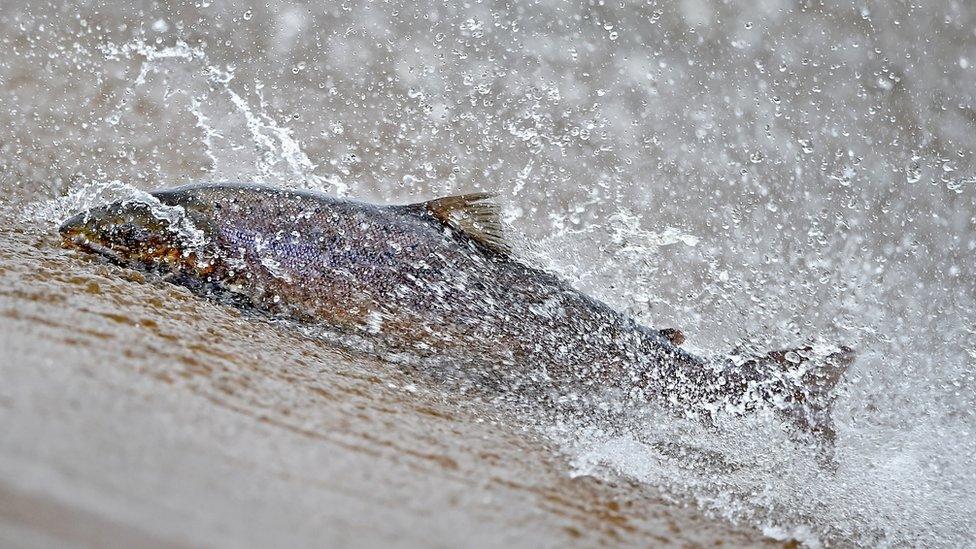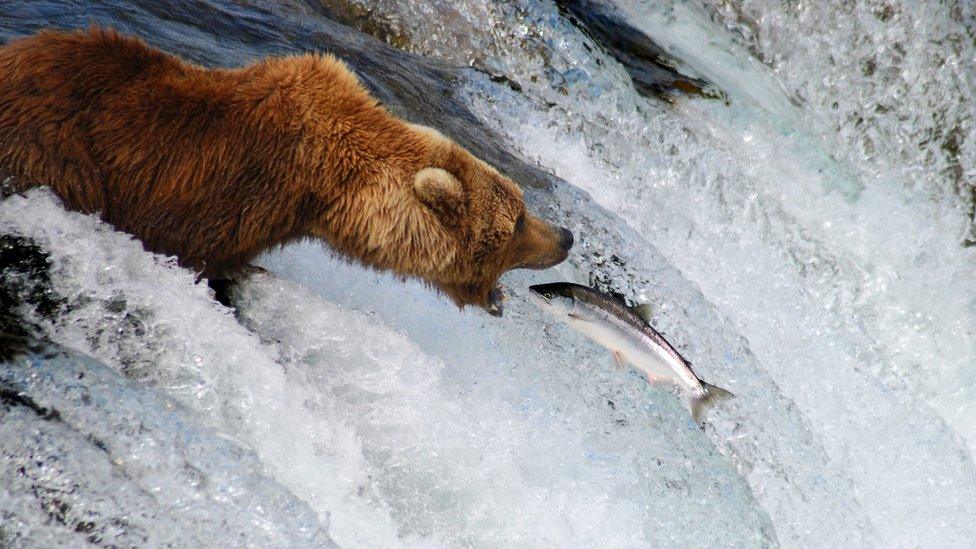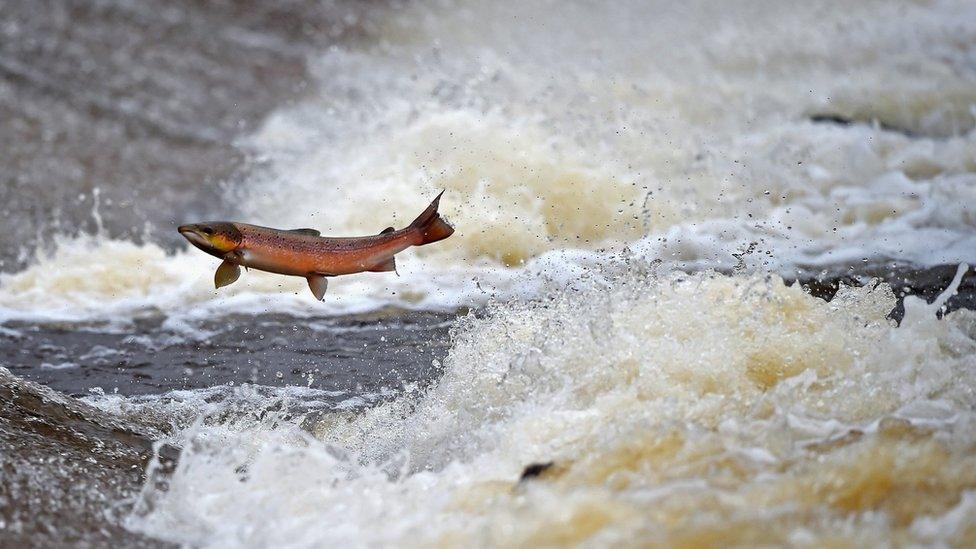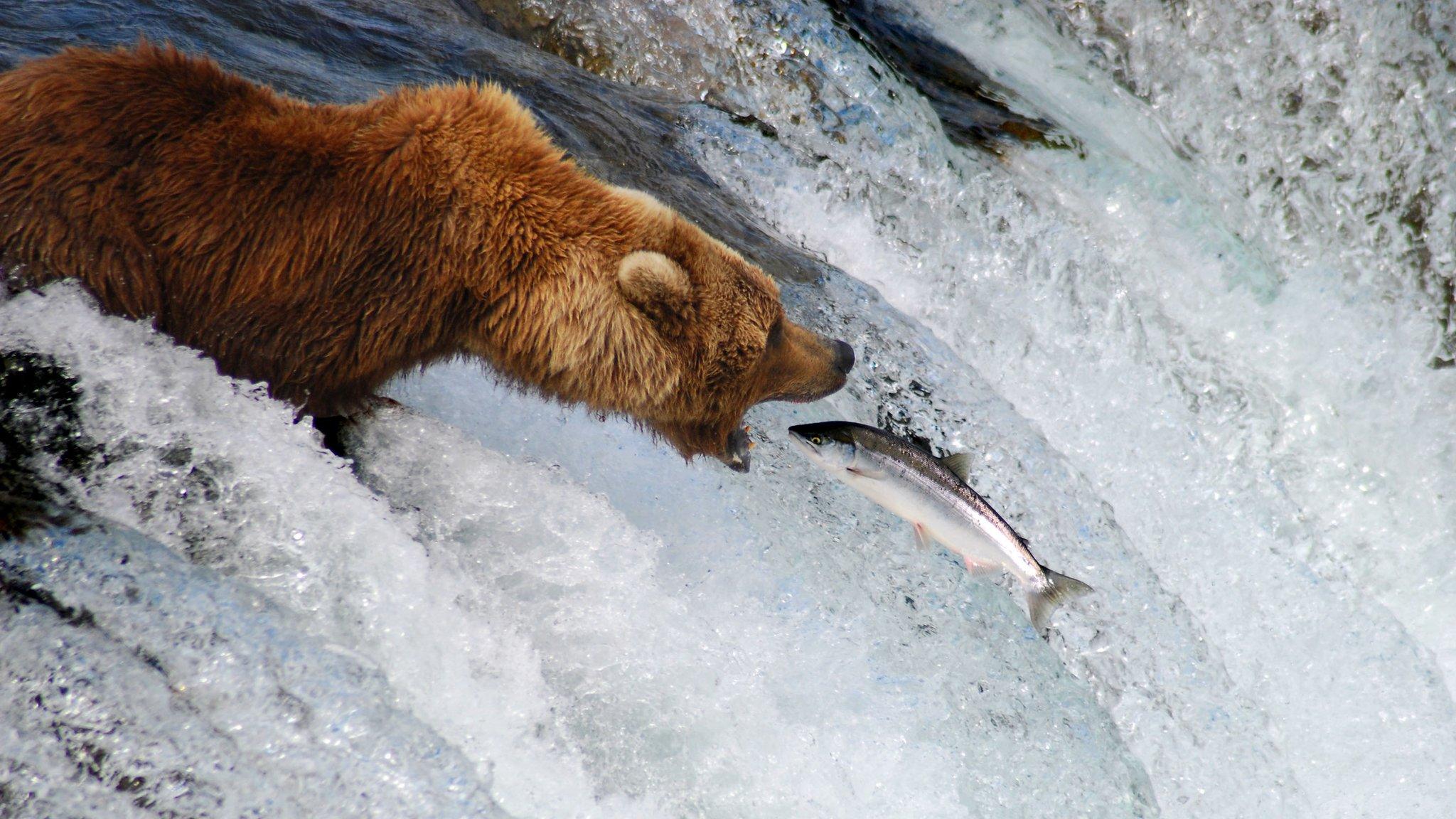Concern about humpback salmon in Highlands rivers
- Published

Native Atlantic salmon could be at risk of competition for food if pink salmon become established
A scientist has raised concerns about what is believed to be a non-native salmon species being caught in rivers in the Highlands.
Anglers have reported finding humpback salmon, also known as pink salmon, in the Ness and Helmsdale rivers.
The fish are native to Pacific Ocean waters and are a favourite prey of North America's grizzly bears.
Prof Eric Verspoor said the fish being found "running up" the rivers suggested they might be trying to spawn.
The director of the Rivers and Lochs Institute at Inverness College UHI said DNA tests would confirm if the fish found in the Highlands were humpback salmon.
If there is confirmation of the species, they are likely to be stray fish related to pink salmon introduced to rivers in eastern Russia in the mid-1950s.
These fish have since gone on to be found in rivers in Scandinavian countries, including Norway, and strays have been found in other Scottish rivers.

Humpback salmon are native to Pacific waters and a favourite food of grizzly bears
Prof Verspoor said the non-native species could become established in Scotland and compete with native Atlantic salmon.
He said: "It might be argued by some that another salmon species might be desirable in Scotland's rivers.
"However, the potential for negative impacts on native species and the fact that they are the least desirable of the Pacific salmon from an angling and commercial fishery perspective suggests there are unlikely to be any positives from their doing so.

Prof Verspoor said there was a potential threat to the "biological uniqueness" of Scotland's salmon
"The fact that they are running up Scottish rivers is worrying as that suggests a spawning intention - the species normally spawns from July to October across its native range.
"Furthermore, the numbers of pink salmon caught in UK rivers appears to be on the increase over the last decade.
"What would be interesting to know is whether the fish caught encompass males and females, and whether they are reproductively mature or not."
Prof Verspoor added: "It is a situation which should be closely monitored in respect of the threat it poses to Scotland's native salmon, given the latter's great socio-economic value and biological uniqueness."
- Published11 July 2017
